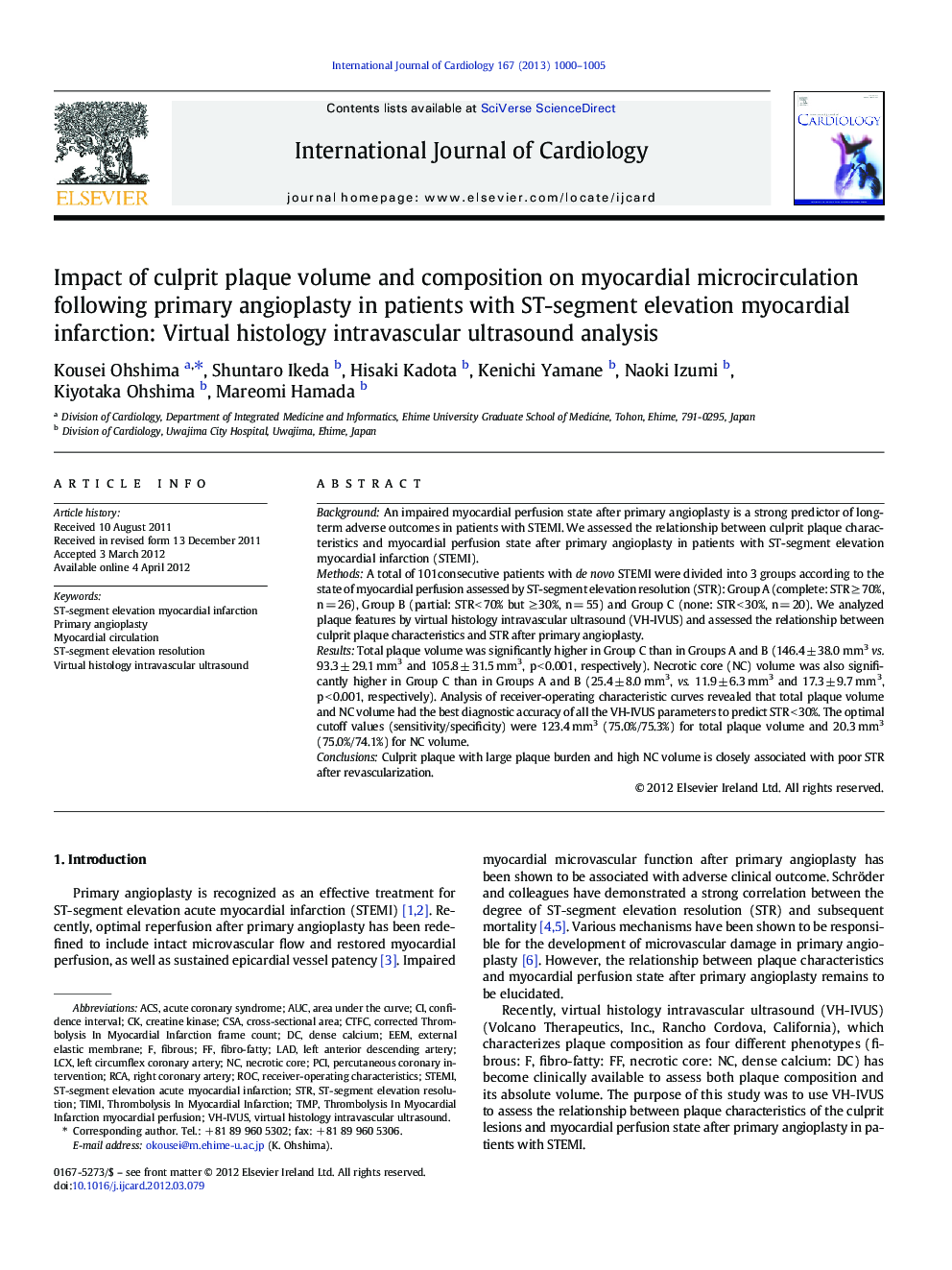| Article ID | Journal | Published Year | Pages | File Type |
|---|---|---|---|---|
| 5974872 | International Journal of Cardiology | 2013 | 6 Pages |
BackgroundAn impaired myocardial perfusion state after primary angioplasty is a strong predictor of long-term adverse outcomes in patients with STEMI. We assessed the relationship between culprit plaque characteristics and myocardial perfusion state after primary angioplasty in patients with ST-segment elevation myocardial infarction (STEMI).MethodsA total of 101consecutive patients with de novo STEMI were divided into 3 groups according to the state of myocardial perfusion assessed by ST-segment elevation resolution (STR): Group A (complete: STR â¥Â 70%, n = 26), Group B (partial: STR < 70% but â¥Â 30%, n = 55) and Group C (none: STR < 30%, n = 20). We analyzed plaque features by virtual histology intravascular ultrasound (VH-IVUS) and assessed the relationship between culprit plaque characteristics and STR after primary angioplasty.ResultsTotal plaque volume was significantly higher in Group C than in Groups A and B (146.4 ± 38.0 mm3vs. 93.3 ± 29.1 mm3 and 105.8 ± 31.5 mm3, p < 0.001, respectively). Necrotic core (NC) volume was also significantly higher in Group C than in Groups A and B (25.4 ± 8.0 mm3, vs. 11.9 ± 6.3 mm3 and 17.3 ± 9.7 mm3, p < 0.001, respectively). Analysis of receiver-operating characteristic curves revealed that total plaque volume and NC volume had the best diagnostic accuracy of all the VH-IVUS parameters to predict STR < 30%. The optimal cutoff values (sensitivity/specificity) were 123.4 mm3 (75.0%/75.3%) for total plaque volume and 20.3 mm3 (75.0%/74.1%) for NC volume.ConclusionsCulprit plaque with large plaque burden and high NC volume is closely associated with poor STR after revascularization.
